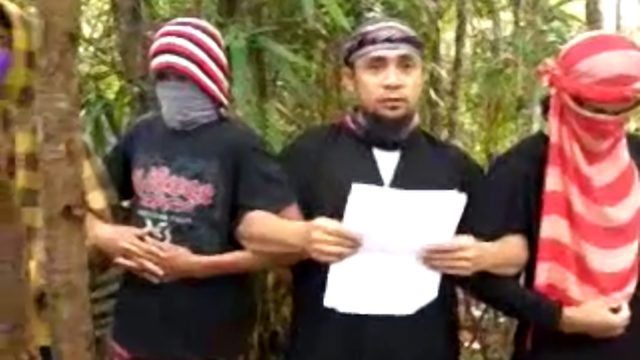SUMMARY
This is AI generated summarization, which may have errors. For context, always refer to the full article.

MANILA, Philippines (2nd UPDATE) – Abu Sayyaf leader Isnilon Hapilon may have escaped the now one-month battle between the army and Maute group in Marawi City, a senior military official said on Saturday, June 24.
Hapilon, said to be the leader of the Islamic State (ISIS) group in Southeast Asia, has not been seen in the battle zone in Marawi City, said Lieutenant General Carlito Galvez, head of the military’s Western Mindanao Command.
An attempt by government troops to arrest Hapilon in Marawi on May 23 triggered a rampage by Maute terrorists flying black IS flags who seized parts of the mainly Muslim city. (READ: 1 month of Marawi clashes: Death toll now at 375)
President Rodrigo Duterte declared martial law in Marawi and the entire southern region of Mindanao, unleashing an offensive to crush what he said was an attempt by the jihadist group to establish a province in the area.
“He (Hapilon) has not been seen in the area. We have some reports that he was already able to slip somewhere but as of now we are still confirming the reports,” Galvez said in an interview on radio dzBB.
Asked if Hapilon was on the run, he said: “Yes, yes because reportedly he suffered a lot of casualties. Majority of his group, more than half, were casualties.” (READ: Marawi battle zone: Urban warfare challenges PH military)
‘Fight to the end’
Hapilon was indicted in the US for his involvement in the 2001 kidnapping of 3 Americans in the Philippines, and has a $5-million bounty on his head from the US government, which has his name on its “most wanted” terror list.
He leads a faction of the Abu Sayyaf that has pledged allegiance to ISIS.
Security analysts say he has been recognized by ISIS as its “emir,” or leader, in Southeast Asia, a region where the group wants to establish a caliphate.
The military says Hapilon’s group had joined forces with the Maute Group, to launch the Marawi siege.
On Saturday, security forces continued intense air raids and artillery fire on pockets of Marawi still occupied by the terrorists, while troops fought house-to-house gunbattles on the ground.
“The operation is going on, the firefights are intense. We have gained substantial ground,” said Galvez, the military commander.
But military spokesman Brigadier General Restituto Padilla said he expects the fighting to continue for a while.
“These people are suicidal. Our assessment is that they will really fight to the end,” Padilla said, also on DZBB.
He said the rebel combatants are seeking shelter in bunkers and tunnels built by Marawi residents to protect themselves against possible clan wars and unrest related to a Muslim insurgency in Mindanao.
Nearly 300 rebels and 67 government troops have been killed in the fighting, according to official figures.
Galvez said there are “strong indications” that two or three of the Maute brothers – among the key players in the siege – had been killed, including Omar Maute, believed to be the group’s top leader.
Only one brother, Abdullah, has been visible in the fighting, Galvez added.
Foreign fighters
Presidential spokesman Ernesto Abella said in Manila the military is “validating an intelligence report” that Malaysian Mahmud bin Ahmad, who helped lead and finance the Marawi siege, was killed.
When asked about Mahmud’s reported death, Malaysia’s Inspector General of Police Khalid Abu Bakar told AFP in a text message in Kuala Lumpur: “Not true. He is still alive.”
Abella said authorities were also verifying another intelligence report that 89 foreign fighters are in Mindanao, entering the region through the Philippines’ porous maritime borders with Malaysia and Indonesia.
Galvez said troops on Friday recovered two decomposing corpses that bore features of people from the Middle East.
Eight other terrorists, including those from Chechnya, Indonesia and Malaysia, had been killed earlier in the fighting, officials have said.
Indonesia, Malaysia and the Philippines on June 19 launched joint patrols on their maritime borders to block the movement of the terrorists.
Australia said Friday it will send two high-tech spy planes to help Filipino troops fight the terrorists, joining the US which has also provided similar help. –Rappler.com
Add a comment
How does this make you feel?
There are no comments yet. Add your comment to start the conversation.